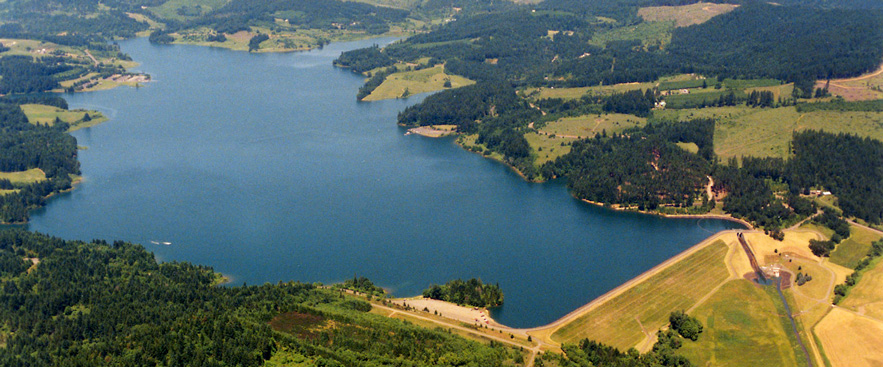- Reclamation
- Columbia-Pacific Northwest Region
- Columbia Cascades Area Office
- Lands, Resources & Recreation
- Willamette Basin ... Water Quality Implementation Plan
Willamette Basin Mercury Total Maximum Daily Load Water Quality Implementation Plan

The Willamette River basin and its numerous tributaries currently do not meet Oregon’s Water Quality Standards for mercury. These standards protect designated beneficial uses such as human health, recreation, fish and aquatic life, wildlife, hunting, and fishing (fish consumption and rearing). When water quality standards are not met, the federal Clean Water Act requires a Total Maximum Daily Load to be established. A TMDL determines a pollution budget for a waterbody to meet water quality standards.
On Feb. 4, 2021, the U.S. Environmental Protection Agency finalized the revised Willamette Basin Mercury Total Maximum Daily Load. The revised TMDL identifies sources of mercury and requirements needed to meet water quality standards. EPA’s revised TMDL also relies on and incorporates portions of the November 2019 Willamette Basin Mercury TMDL prepared by the Oregon Department of Environmental Quality, including Section 13 of the November 2019 TMDL titled “Water Quality Management Plan.” Section 13 describes goals and objectives of a plan to meet the TMDL load allocations via water quality implementation plans produced for ODEQ by designated management agencies.
The Bureau of Reclamation received a letter from ODEQ on Feb. 17, 2022, designating Reclamation as a reservoir operator designated management agency as owner of Scoggins Dam which impounds Henry Hagg Lake. Scoggins Dam is operated and maintained by the Tualatin Valley Irrigation District; however, Reclamation remains the owner of the project facilities and provides for maintenance of the Hydromet system (for flood control forecasting), fish mitigation, water quality monitoring, oversight of recreation management on Henry Hagg Lake by Washington County, pest management, environmental audits, water conservation measures, and activities related to resolving unauthorized use of water. As of ODEQ’s 2022 integrated report, Henry Hagg is not listed as impaired for mercury.
Reclamation developed a water quality implementation plan to describe proposed and ongoing water quality monitoring for Henry Hagg Lake Data collected will be used to establish baseline water quality conditions in Henry Hagg Lake that can be used to assess the potential for mercury methylation within the reservoir.
| Documents | |
| 05/2025 | Willamette Water Quality Annual Report PDF 787 KB |
| 05/2024 | Water Quality Implementation Plan PDF 852 KB |
| 05/2024 | Willamette Water Quality Annual Report PDF 314 KB |
Contact
Cavan Gerrish
Water Quality Coordinator
208-378-5347
cgerrish@usbr.gov
Bureau of Reclamation
Columbia—Pacific Northwest Region
1150 N. Curtis Road
Boise, ID 83706

